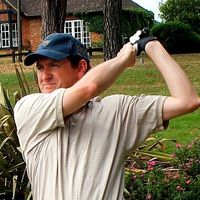Can You Have Too Many Practice Swings In Golf?
The Rules of Golf do not actually give a limit, but with pace of play at the forefront of everyone's minds, how many practice swings are too many?


How Many Practice Swings Are Too Many?
How many practice swings are too many? Well, the rules of golf do not stipulate this. Regarding practice swings, all that the rules are worried about is what happens in certain circumstances as the consequence of a practice swing, not how many practice swings are allowed.
So, how many practice swings are too many? It is tempting to say, one in several cases. For many golfers, what use is a practice swing? We have all played with golfers who cannot seemingly face hitting a ball unless they have taken two or three practice swings first. We also know in many cases that these practice swings may bear only a passing relation to the shot they will actually end up playing.
There are good scientific reasons for this, beyond the fact that most practice swings are played at slower tempo and often aimed – if aimed at all – at an imaginary ball a few inches above the ground. Making a golf swing without a ball to hit is easier. The boffins who study such things tell us its about things such as object manipulation. Without a ball, all you are doing is manipulating the movement of a club. Put a ball into the equation and it is, quite literally, a whole new ball game. Now there are two objects to manipulate – club and ball.

It's quite literally a different ball game when you swing for real
This extra factor can most easily be seen in that beginner who is taught to swing a club, and can make a reasonable swing without a ball. But put a ball down in front of them and the ball now becomes the focus of attention and too often the result is that the smooth swing and follow through disappear in favour of a swat at the ball.
When slow pace of play is such a perennial topic, cutting back on unnecessary practice swings will speed up play, or rather not slow it down quite so much. A practice swing, or two, or maybe three, may only take up a few seconds. But these seconds add up. Say a dozen seconds for each set of practice swings and, working on the basis of how many golfers break 90, let’s say 75 shots where this applies, presuming our golfer also does a few practices with the putter for some of their longer putting strokes. Well that all adds up to 15 minutes spent on practice swings during a round.
There are times when a practice swing may make sense, such as when you are having to play a shot where your stance is on uneven ground, but sometimes they are more akin to nervous tick, part of a players pre-shot routine which does little more than slow play. Ask yourself: is a practice swing really necessary here? And if you do play one, be careful that you don’t end up adding a penalty shot to your score.
If you cause your ball to move during a practice swing this does not count as a shot, and you have to replace the ball where it was. If you do so on the teeing area or the green, there is no penalty. But if you do so in a general area, bunker or penalty area then there is a one-shot penalty. In a bunker, if your club touches sand during a practice swing that is also a one-shot penalty.
Subscribe to the Golf Monthly newsletter to stay up to date with all the latest tour news, equipment news, reviews, head-to-heads and buyer’s guides from our team of experienced experts.
Contributing Writer Roderick is the author of the critically acclaimed comic golf novel, Summer At Tangents. Golf courses and travel are Roderick’s particular interests. He writes travel articles and general features for the magazine, travel supplement and website. He also compiles the magazine's crossword. He is a member of Trevose Golf & Country Club and has played golf in around two dozen countries. Cricket is his other main sporting love. He is also the author of five non-fiction books, four of which are still in print: The Novel Life of PG Wodehouse; The Don: Beyond Boundaries; Wally Hammond: Gentleman & Player and England’s Greatest Post-War All Rounder.
